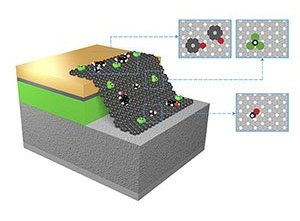Jul 14 2014
The ICN2 Nanobioelectronics & Biosensors Group, led by ICREA Research Professor Arben Merkoçi, published in Small a work showing how to use a Graphene/Silicon Heterojunction Schottky Diode as a sensitive, selective and simple tool for vapors sensing.

Among other carbon-based nanomaterials, graphene represents a great promise for gas sensing applications. In 2009 the detection of individual gas molecules of NO2 adsorbed onto graphene surface was reported for the first time. This initial observation has been successfully explored during the recent years. The Nanobioelectronics & Biosensors Group at Institut Català de Nanociència i Nanotecnologia (ICN2), led by ICREA Research Professor Arben Merkoçi, published in Small a work showing how to use a Graphene/Silicon Heterojunction Schottky Diode as a sensitive, selective and simple tool for vapors sensing. The work was developed in collaboration with researchers from the Amirkabir University of Technology (Tehran, Iran).
The Graphene/Silicon heterojunction Schottky diode is fabricated using a silicon wafer onto which Cr and Au were deposited to form the junction between graphene and silicon (see the attached figure). The adsorbed vapor molecules change the local carrier concentration in graphene, which yields to the changes in impedance response. The vapors of the various chemical compounds studied change the impedance response of Graphene/Silicon heterojunction Schottky diode. The relative impedance change versus frequency dependence shows a selective response in gas sensing which makes this characteristic frequency a distinctive parameter of a given vapor.
The device is well reproducible for different concentrations of phenol vapor using three different devices. This graphene based device and the developed detection methodology could be extended to several other gases and applications with interest for environmental monitoring as well as other industries.
Article reference:
Ali Fattah, Saeid Khatami, Carmen C. Mayorga-Martinez, Mariana Medina-Sánchez, Luis Baptista-Pires and Arben Merkoçi. Graphene/Silicon Heterojunction Schottky Diode for Vapors Sensing Using Impedance Spectroscopy. Small; 30 JUN 2014; DOI: 10.1002/smll.201400691
http://www.ncbi.nlm.nih.gov/pubmed/24978467